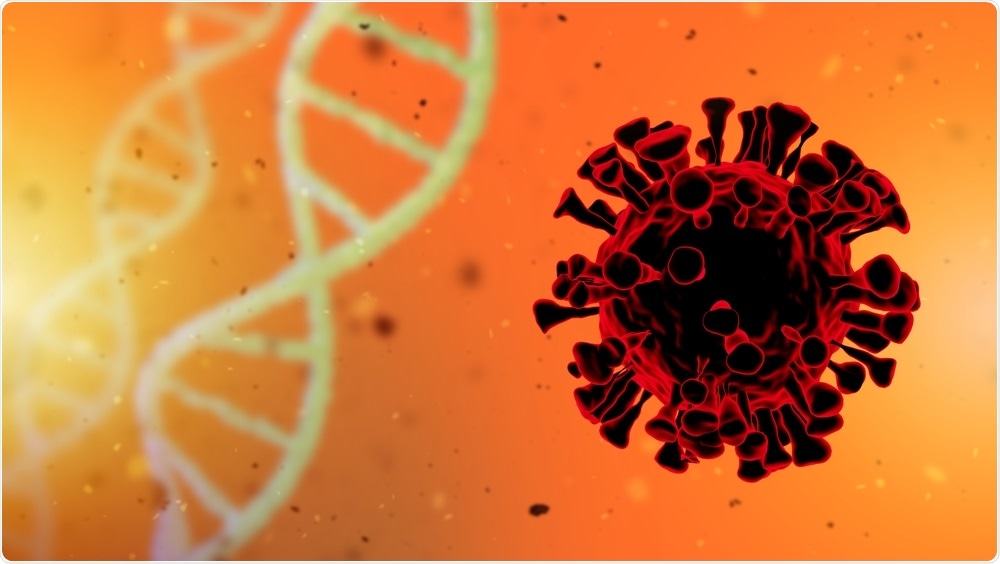Coronaviruses are single-stranded positive-sense enveloped ribonucleic acid (RNA) viruses that can be subdivided into four genera, including Alpha, Beta, Delta, and Gamma coronaviruses. Four coronaviruses that have previously caused mild disease and were found to circulate among the human population were HCoV-OC43, HCoV-HKU1, HCoV-229E, benicar coupons and HCoV-NL63.
However, there has been a drastic change in the outcomes of patients infected with coronaviruses in recent years as a result of the zoonotic introduction of three highly pathogenic Beta Coronaviruses of the severe acute respiratory syndrome coronavirus (SARS-CoV) in 2002, the Middle East respiratory syndrome coronavirus (MERS-CoV) in 2012 and SARS-CoV-2 in 2019. Among them, SARS-CoV-2 has resulted in the recent coronavirus disease 2019 (COVID-19) pandemic, which has cost the lives of over five million people throughout the world.
 Study: Clinically observed deletions in SARS-CoV-2 Nsp1 affect protein stability and its ability to inhibit translation. Image Credit: FOTOGRIN / Shutterstock.com
Study: Clinically observed deletions in SARS-CoV-2 Nsp1 affect protein stability and its ability to inhibit translation. Image Credit: FOTOGRIN / Shutterstock.com
Background
Coronaviruses are known to have exceptionally large genomes of 27 to 32 kilobases (kb). This genomic expansion has allowed coronaviruses to acquire a larger set of host-cell manipulating proteins.
One key pathogenicity factor is non-structural protein 1 (Nsp1). Nsp1 was known to inhibit antiviral host-cell interferon response with the help of a dual mechanism that includes the mediation of host-cell messenger RNA (mRNA) cleavage by an unknown ribonuclease and suppression of translation by interaction with the large (40S) subunit of the ribosome.
Mutations in Nsp1 have shown that Arg124-Lys125 in the folded N-terminal domain of SARS-CoV was responsible for mRNA cleavage, while Lys164-His165 in the C-terminal domain was responsible for ribosome binding. Furthermore, Nsp1 was found to bind to the empty small ribosomal subunit of the 43S preinitiation complex, as well as the full 80S ribosome.
Cryo-electron microscopy (cryo-EM) structures have shown that the C-terminal of Nsp1 folds as two α-helices that form a hairpin-like arrangement inside the mRNA tunnel that blocks the binding of the mRNA. However, the C-terminal is normally unstructured and its structure is instead attained upon binding to the ribosome. Cryo-EM studies have also helped to determine the location of the Nsp1 N-terminal domain in the ribosomal complex.
However, questions have been raised on how any translation is possible if Nsp1 blocks the mRNA channel. Although the answer to this remains incomplete, two important findings have been reported.
First, SARS-CoV-2 Nsp1 inhibits translation of both host and viral mRNA; however, inhibition is less in the case of mRNAs with the viral 5' untranslated region (UTR). Second, the SARS-CoV-2 mRNA can partially escape Nsp1 suppression through an interaction between Nsp1 and the stem-loop region 1 (SL1) of the viral 5' UTR.
The emergence of new mutants and SARS-CoV-2 variants throughout the ongoing pandemic has led to extensive genetic characterization. Several deletions in Nsp1 have been reported in different circulating viral variants. These deletions lead to differences in disease outcomes in patients infected with SARS-CoV-2.
A new study published on the preprint server bioRxiv* discusses the purification of various Nsp1 proteins isolated from several mutated variants of SARS-CoV-2 and compared their potency in inhibiting translations using a human cell in vitro translation lysate.
About the study
The current study involved the expression and purification of wild-type Nsp1, as well as Nsp1 with deletions using a plasmid construct. This was followed by in vitro transcription, where capped and polyadenylated RNA transcripts were synthesized from a linearized plasmid.
Furthermore, in vitro translation lysates were prepared from HEK293F cells. Finally, in vitro translation assays were performed, followed by thermal shift assay and structure prediction.
Study findings
The results indicated that many of the Nsp1 deletions could lead to suppression of translation similar to the wild-type. However, the longest deletion in the N-terminal domain, ∆79-89, was not less effective in inhibiting translation as compared to the wild type and other deletion variants. This ∆79-89 variant was not able to shut down translation completely, even when it was present at thirty folds higher concentration as compared to the wild-type.
The results also showed that the thermal stability of the ∆79-89 variant was less in comparison to the wild-type, which may be suggestive of the lesser structural stability of this variant. Structure predictions showed that the ∆79-89 variant has lesser stability due to disruption of its N-terminal β-barrel domain fold. Also, shorter deletions around the 79-89 residue may have an impact on the interferon response and transcriptome that was independent of the translational shutdown.
*Important notice
bioRxiv publishes preliminary scientific reports that are not peer-reviewed and, therefore, should not be regarded as conclusive, guide clinical practice/health-related behavior, or treated as established information.
- Kumar, P., Schexnaydre, E., Rafie, K., et al. (2021). Clinically observed deletions in SARS-CoV-2 Nsp1 affect protein stability and its ability to inhibit translation. bioRxiv. doi:10.1101/2021.11.03.467065. https://www.biorxiv.org/content/10.1101/2021.11.03.467065v1.
Posted in: Medical Science News | Medical Research News | Disease/Infection News
Tags: Assay, Cell, Coronavirus, Coronavirus Disease COVID-19, Electron, Electron Microscopy, Genetic, Genomic, in vitro, Interferon, Lysate, MERS-CoV, Microscopy, Pandemic, Plasmid, Protein, Protein Stability, Respiratory, Ribonucleic Acid, Ribosome, RNA, SARS, SARS-CoV-2, Severe Acute Respiratory, Severe Acute Respiratory Syndrome, Structural Protein, Syndrome, Transcription, Translation

Written by
Suchandrima Bhowmik
Suchandrima has a Bachelor of Science (B.Sc.) degree in Microbiology and a Master of Science (M.Sc.) degree in Microbiology from the University of Calcutta, India. The study of health and diseases was always very important to her. In addition to Microbiology, she also gained extensive knowledge in Biochemistry, Immunology, Medical Microbiology, Metabolism, and Biotechnology as part of her master's degree.
Source: Read Full Article
